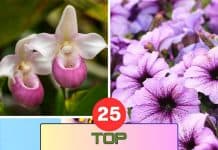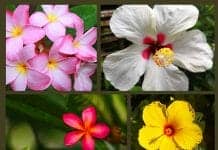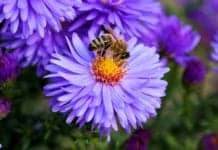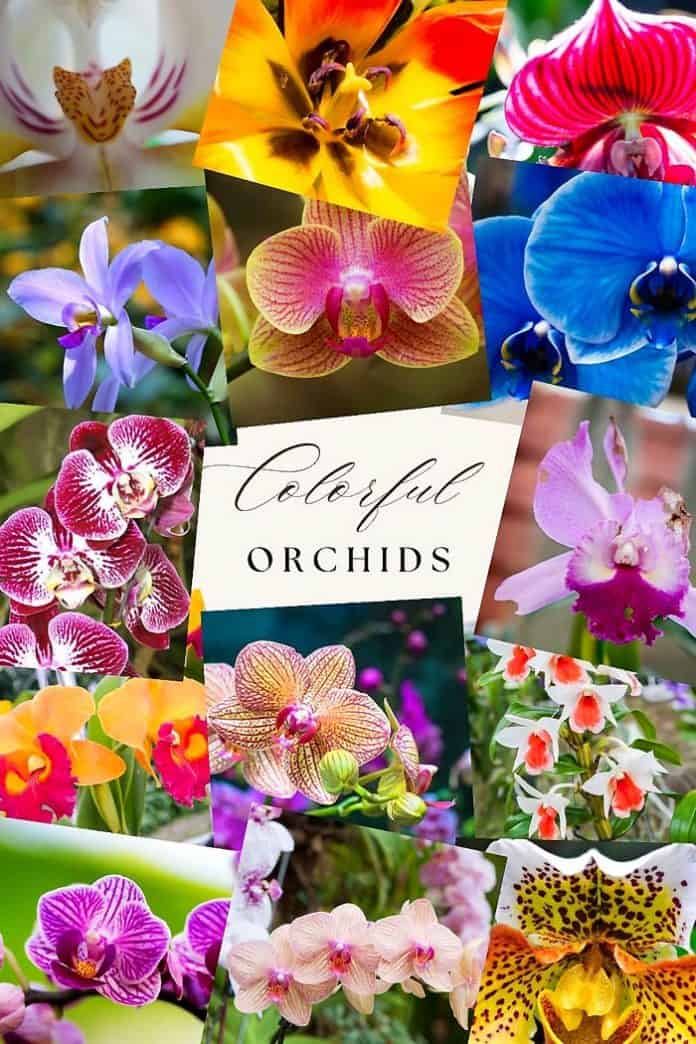
Colorful Orchids, nature’s living masterpieces, have captivated human imagination for centuries with their dazzling array of colors, intricate shapes, and sweet fragrances. These colorful botanical wonders, belonging to the diverse Orchidaceae family, represent one of Earth’s largest and most varied plant families.
From the deepest jungles to the highest mountain peaks, orchids have adapted to an astonishing range of habitats, evolving an equally impressive spectrum of colors.
The allure of orchids lies not just in their beauty but in their remarkable diversity. With 25,000 known species[1] and more than 100,000 registered hybrids, orchids showcase an unparalleled range of colors, patterns, and forms. From the vivid blues of Vanda coerulea to the fiery reds of Sophronitis coccinea, each species tells a unique story of evolution and adaptation.
Table of Contents
- Colorful Orchids
- 1. Pansy Orchid
- 2. Crimson Cattleya
- 3. Pink Butterfly Orchid
- 4. Gold of Kinabalu Orchid
- 5. Blue Orchid
- 6. Noble Dendrobium
- 7. Spotted Zygopetalum
- 8. Swan Orchid
- 9. Dancing Lady Orchid
- 10. Butterfly Orchid
- 11. Crucifix Orchid
- 12. Spiny-lipped Bulbophyllum
- 14. Monk Orchid
- 15. Low’s Cymbidium
- 16. Digby’s Rhyncholaelia
- 17. Nun’s Orchid
- 18. Veiled Orchid
- 19. Fire Orchid
- 20. Orange Butterfly Orchid
- 21. Fairy Slipper Orchid
- 22. Spectacular Dendrobium
- 23. Heart-shaped Encyclia
- 24. Tiger Orchid
- 25. Golden Throated Orchid
- The Orchidaceae Family: A Brief Overview
- Orchid Habitats and Adaptations
- The Importance of Color in Orchid Ecology
Colorful Orchids
1. Pansy Orchid
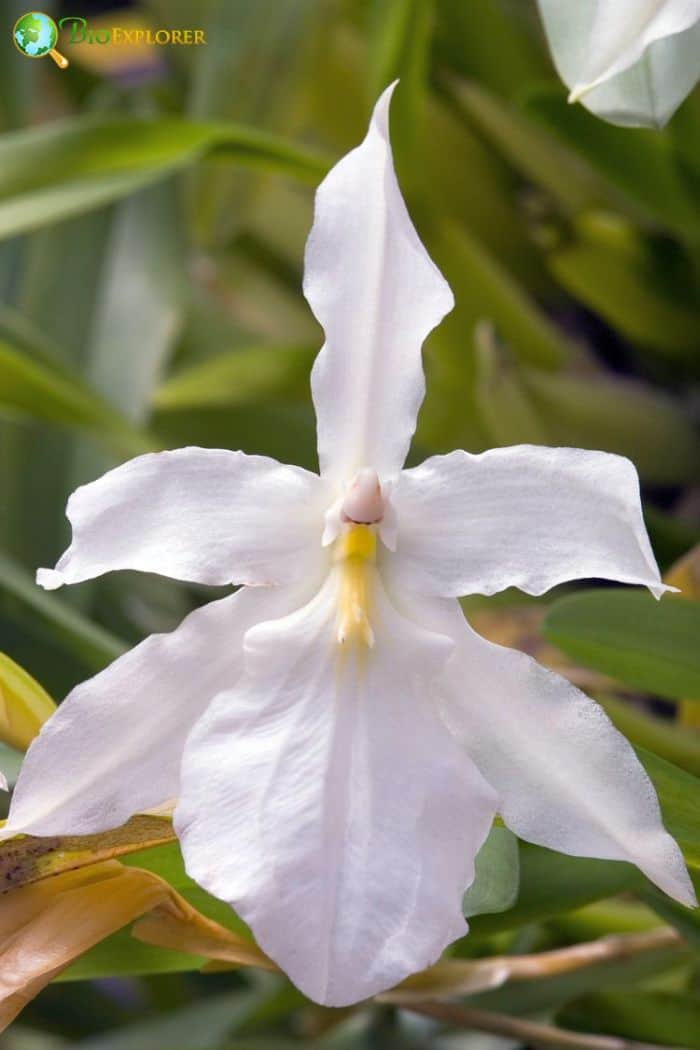
The Pansy Orchid, scientifically known as Miltoniopsis, is a genus of epiphytic orchids native to the cloud forests of Colombia, Ecuador, Peru, and Central America.
- These colorful orchids are renowned for their large, flat flowers that resemble pansies, typically blooming in spring and autumn with fragrant blossoms in shades of pink, white, yellow, and red, often featuring contrasting patterns on their lips.
- Miltoniopsis orchids are often confused with the closely related Miltonia genus, which is native to Brazil and has a more starry flower shape.
- Preferring to cooler temperatures and higher humidity, Pansy Orchids grow naturally at elevations between 2,000 and 6,000 feet and require specific care to thrive, including bright but indirect light and consistent moisture[4].
- While challenging to grow, their striking appearance and long-lasting blooms (6-8 weeks) make them popular among orchid enthusiasts.
![]()
2. Crimson Cattleya
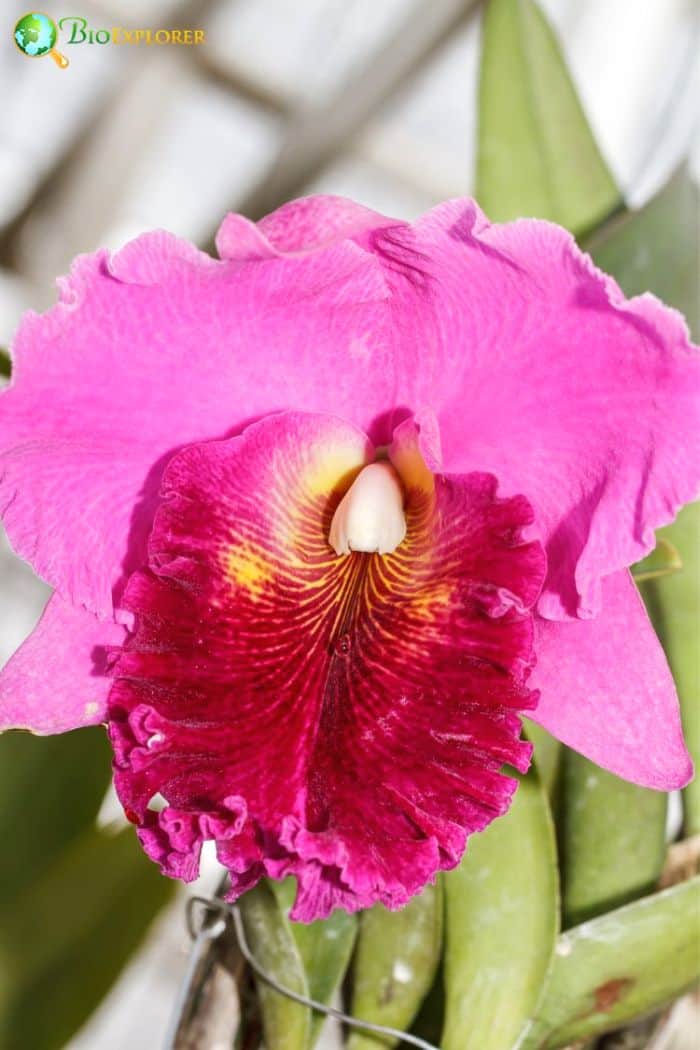
| Plantae | Asparagales | Orchidaceae | Cattleya | Cattleya labiata |
The Crimson Cattleya, scientifically known as Cattleya labiata, is a striking orchid species native to the northeastern regions of Brazil, particularly in the states of Pernambuco and Alagoas.
- Renowned for its large, showy flowers ranging from rosy pink or lavender to deep purple, this orchid features[5] a distinctive crimson lip, earning it the nickname “ruby-lipped cattleya”.
- Cattleya labiata typically grows as an epiphyte, attaching itself to the branches of tall jungle trees where it absorbs nutrients from the air, water, and decaying plant matter[6].
- The blooms, which can reach sizes of 5 to 7 inches, are visually stunning and fragrant, making them highly prized among orchid enthusiasts.
![]()
3. Pink Butterfly Orchid
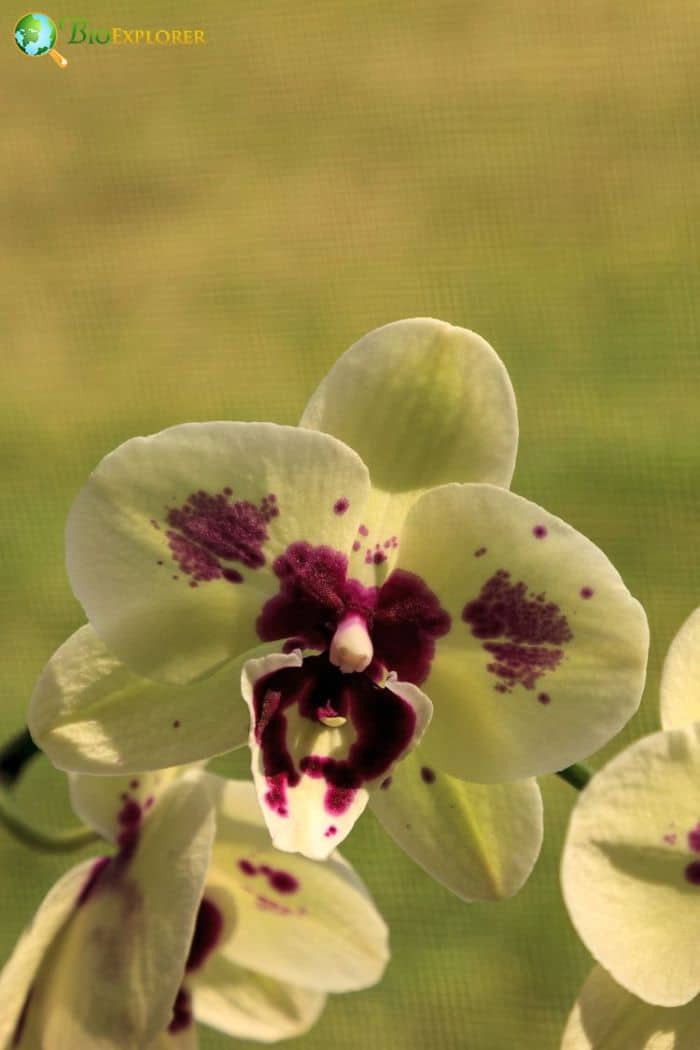
Phalaenopsis schilleriana, commonly known as the Pink Butterfly Orchid or Schiller’s Phalaenopsis, is a striking species native to the Philippines. Renowned for its large, pink flowers that resemble moths in flight, this orchid lives up to the genus’ nickname “Moth Orchids“.
- As an added bonus, its beautiful barred leaves make for an attractive houseplant even when not in bloom.
- These brilliant orchids, lasting up to 4 months, often have a delicate rose fragrance and are typically produced in late winter to spring.
- Phalaenopsis schilleriana is popular among orchid enthusiasts for its ease of cultivation and tolerance to many growing conditions, making it suitable for windowsill and under-lights cultivation.
![]()
4. Gold of Kinabalu Orchid
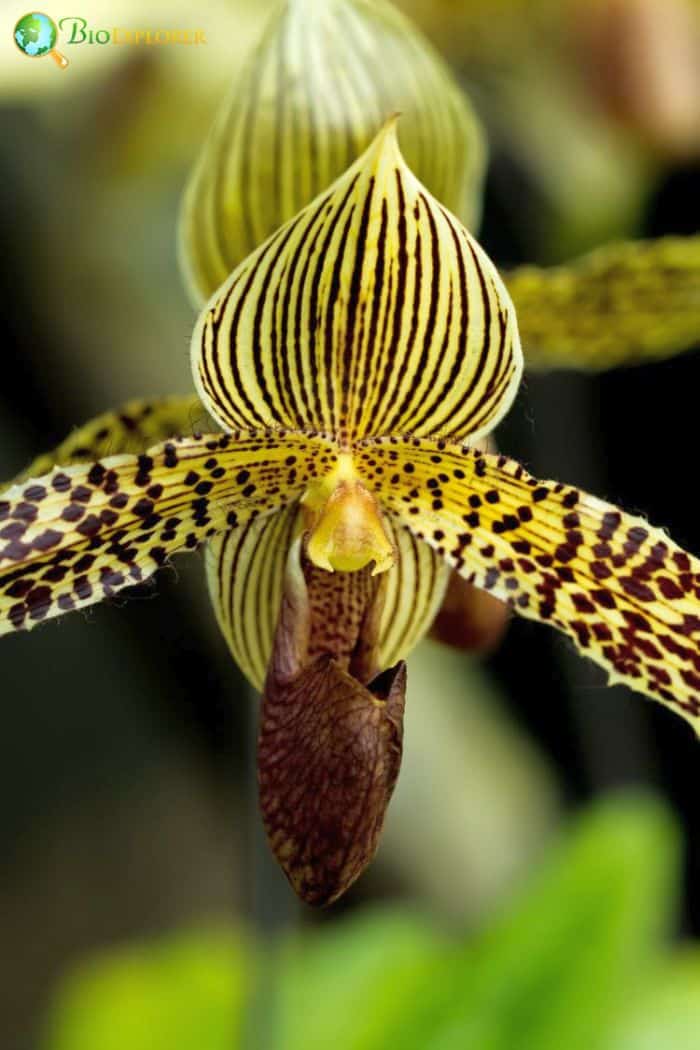
Paphiopedilum rothschildianum, commonly called the Gold of Kinabalu orchid or Rothschild’s slipper orchid, is a large, clear-leafed species native to the rainforests around Mount Kinabalu in northern Borneo.
- This striking orchid is renowned for its impressive flowers, reaching 5-13 inches. It features distinctive horizontal petals with green and red spots that attract pollinating flies.
- Endemic to elevations between 500 and 1200 meters, P. rothschildianum grows as a terrestrial in ultramafic soil or as a lithophyte on cliffs, often near rivers.
- Nicknamed “The King of Orchids“, this species is highly sought-after by collectors. It can take 4-5 years to bloom, producing up to 6 large flowers on a tall inflorescence during its peak flowering period from April to May.
The Gold of Kinabalu Orchid is admired for its beauty and the challenges in its conservation. It remains one of the most sought-after orchids, making conservation efforts crucial.
![]()
5. Blue Orchid
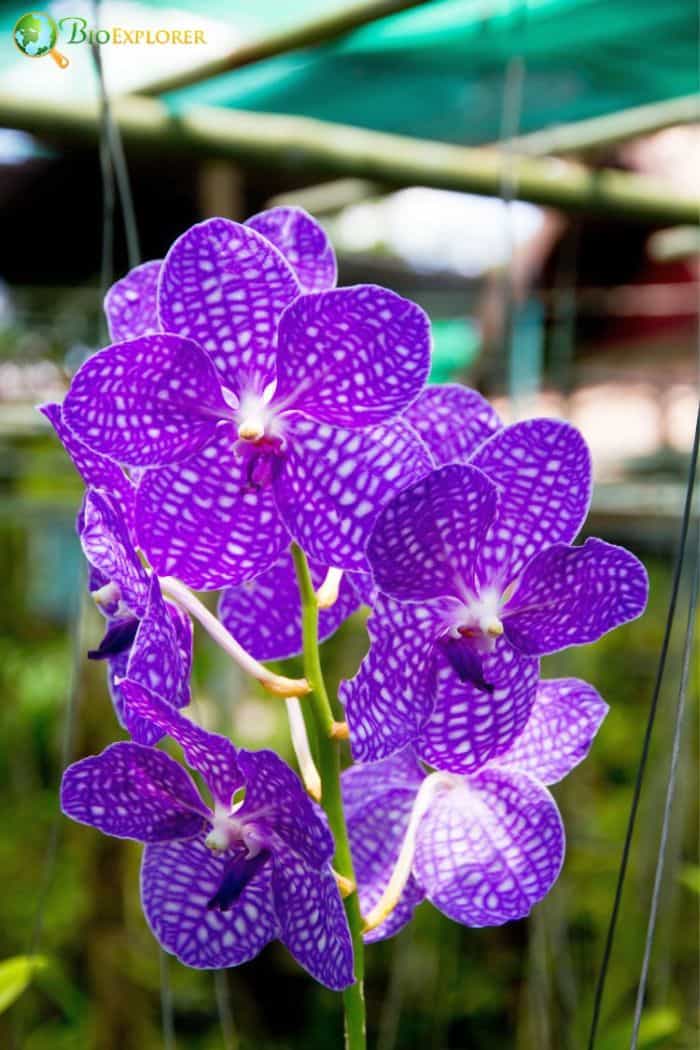
| Plantae | Asparagales | Orchidaceae | Vanda | Vanda coerulea |
Vanda coerulea, commonly called the Blue Orchid or Blue Vanda, is a medium to large-sized epiphytic orchid species native to Northeast India, southern China (Yunnan), and Thailand.
- This colorful orchid is celebrated for its stunning pale violet-blue to purple-blue flowers, which are tessellated with darker purple and can reach up to 4 inches across.
- Blooming primarily in the fall, Vanda coerulea thrives in cool to intermediate growing conditions, typically found at 1,000 to 1,600 meters.
- Known for its long-lasting and fragrant flowers, this species prefers bright, indirect light and well-drained conditions, making it a prized addition to orchid collections[7].
- The flower’s juice is used in traditional medicine as eye drops for treating glaucoma, cataracts, and blindness.
This orchid is highly valued for its unique color, medicinal properties, and significance in horticulture.
![]()
6. Noble Dendrobium
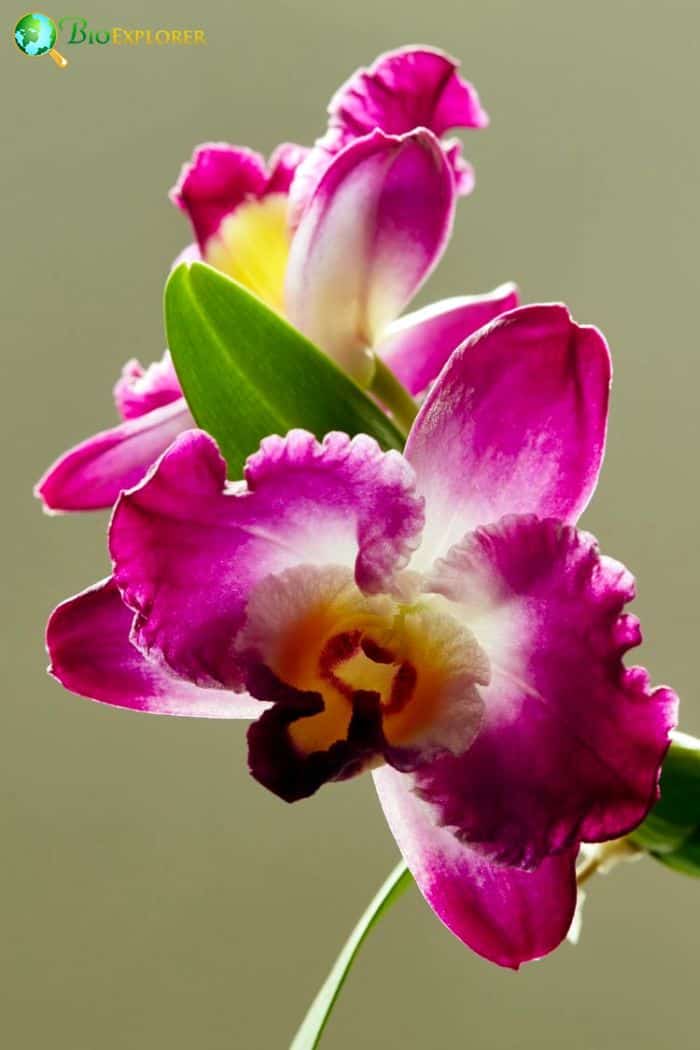
Dendrobium nobile, commonly known as the Noble Dendrobium, is a deciduous orchid species belonging to the Dendrobium section of the genus. Native to various parts of Asia, including India, China, and Southeast Asia, this orchid is characterized by its erect canes with leaves along the length, typically shed during the cold season.
- The Noble Dendrobium is known for its showy flowers that bloom in spring, often appearing on leafless canes. This species features striking flowers that can vary in color, including shades of purple, pink, and white, often with contrasting darker lips.
- As part of the nobile-type dendrobiums, it requires a distinct winter rest period with cooler temperatures and reduced watering to initiate flowering[8].
- This species has been widely used in hybridization, contributing to many popular Dendrobium cultivars and hybrids in cultivation.
- Found in lowland and mountain forests, often on mossy limestone rocks in regions like southern China (including Tibet), the Himalayas, and parts of Indochina.
- Used in traditional Chinese medicine, known as shí hú, for its various health benefits. It has also been added to the EU novel foods catalog and deemed unsafe for human consumption in food supplements without a safety assessment.
This orchid is admired for its ornamental value and plays a significant role in traditional medicine.
![]()
7. Spotted Zygopetalum
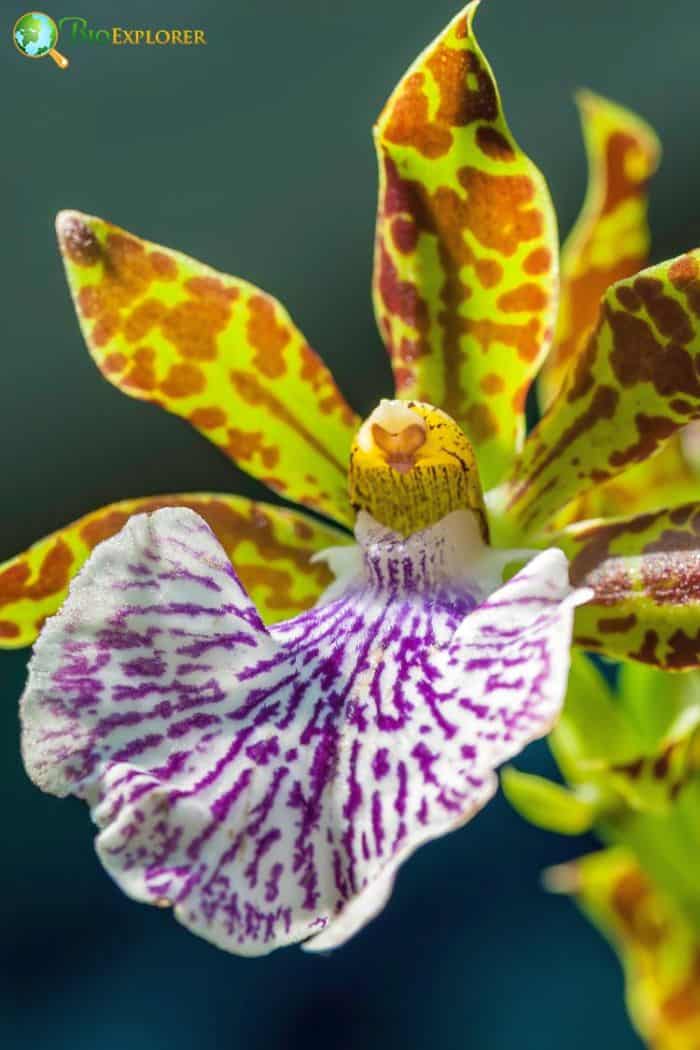
Zygopetalum maculatum, also known as the Spotted Zygopetalum, is an orchid species endemic to South American countries such as Peru, Bolivia, and Brazil. This medium-sized, cool-growing terrestrial orchid is typically found in flat, wet, moss-covered, semi-boggy areas at 1,100 to 2,500 meters.
- These multicolored orchids produce fragrant flowers in spring, with each inflorescence bearing eight to twelve blooms that measure about 4-8 cm wide.
- The flowers are characterized by green petals and sepals with red-brown markings and a distinctive white lip marked with violet[9].
- Zygopetalum maculatum is prized for its long-lasting flowers, which can remain colorful for up to 3 months if pollinated, and its pleasant fragrance, making it a popular choice among orchid enthusiasts.
The Spotted Zygopetalum is valued for its attractive, sweet-fragrant flowers and ability to thrive in specific environmental conditions.
![]()
8. Swan Orchid
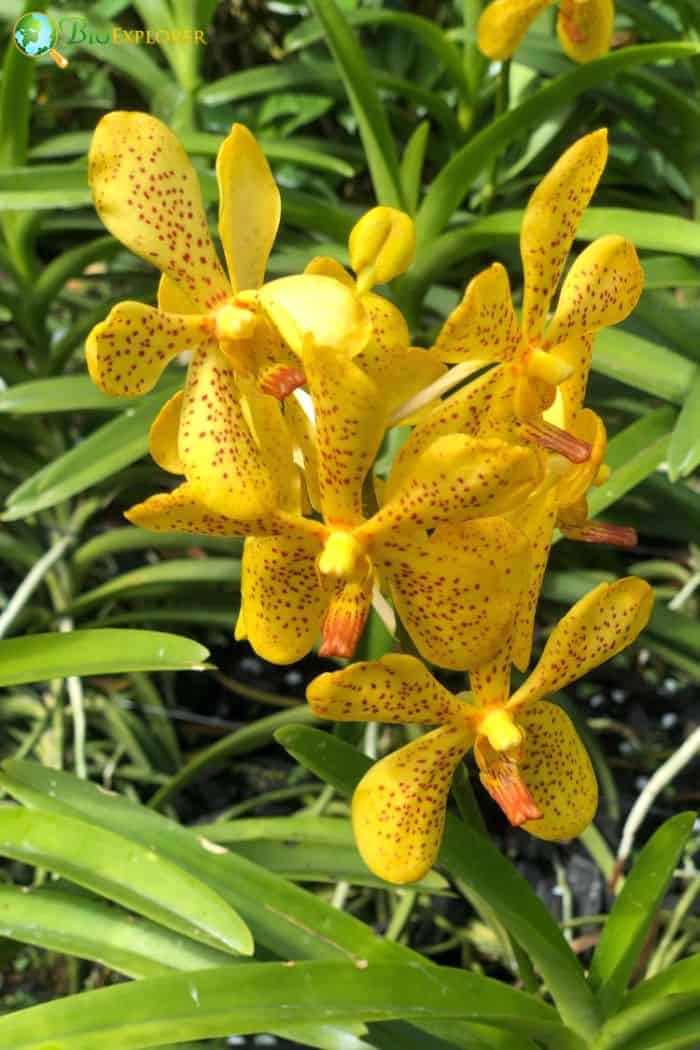
Cycnoches chlorochilon, commonly known as the Swan Orchid, is a unique and highly fragrant orchid species native to South America, particularly in Panama, Colombia, Brazil, and Venezuela. This medium-sized epiphytic orchid is renowned for its large, waxy greenish-yellow flowers, which emit a delightful spicy vanilla or sweet citrus-like or banana-like fragrance.
- The genus Cycnoches is notable for producing separate male and female flowers (sexual dimorphism), often on different inflorescences, with the male flowers featuring an elongated column resembling a swan’s neck[10].
- Thriving in warm to hot temperatures and medium to high light levels, Cycnoches chlorochilon requires a distinct dry period during its winter dormancy, making it a fascinating yet somewhat challenging orchid to cultivate.
- These colorful orchids thrive in lowland and pre-montane forests. For pollination, it involves male euglossine bees, which are attracted to the flowers’ fragrance.
- Prefers bright indirect light and high humidity. It needs well-drained potting media and frequent watering during the growing season.
![]()
9. Dancing Lady Orchid
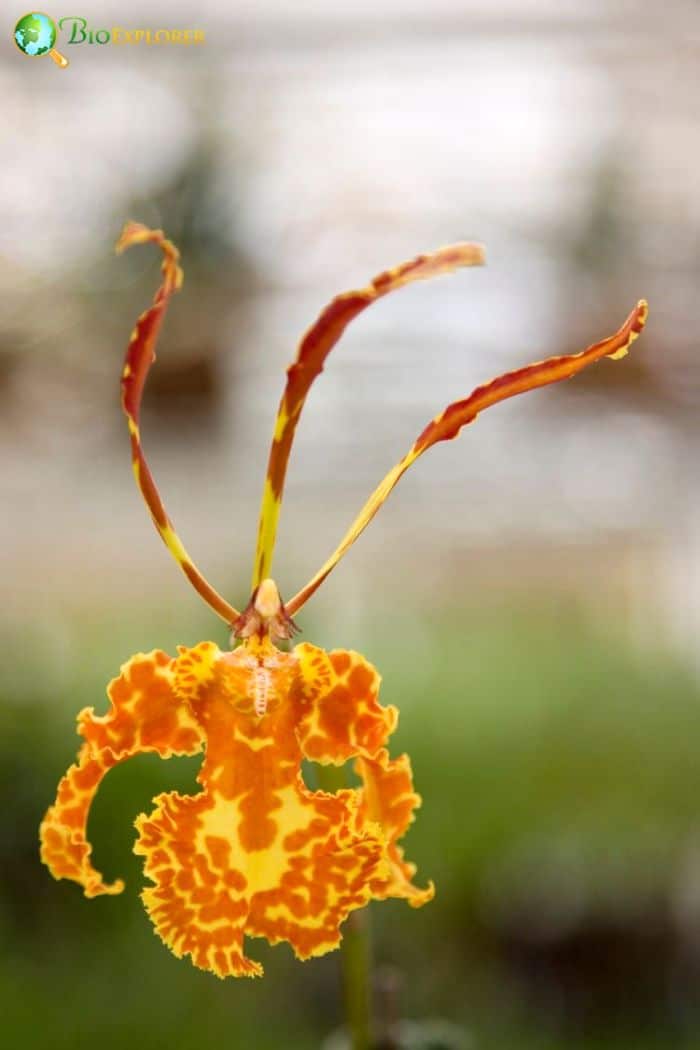
| Plantae | Asparagales | Orchidaceae | Oncidium | Oncidium papilio |
Oncidium papilio, commonly known as the Butterfly Orchid or Dancing Lady Orchid, is an epiphytic orchid species native to tropical regions of South America. This orchid is renowned for its striking flowers that resemble butterflies, with bronze and gold coloration and intricate patterns.
- The flowers are typically bright yellow with brown or red spots and markings, creating a visually appealing contrast.
- The flowers are produced sequentially on long, slender spikes, with each bloom lasting several weeks.
- Oncidium papilio thrives in bright, indirect light and requires good air movement and intermediate to warm temperatures to flourish[11].
- Its unique and captivating appearance makes it popular among orchid enthusiasts and collectors.
- These strikingly colorful orchids are native to tropical regions of Central and South America, including countries like Mexico, Costa Rica, and Venezuela. Found in Tropical Forests at elevations from sea level up to 1,500 meters.
The Dancing Lady Orchid is popular for its striking appearance and is often grown as an ornamental plant. It thrives in warm, humid conditions and requires indirect light to grow well.
![]()
10. Butterfly Orchid
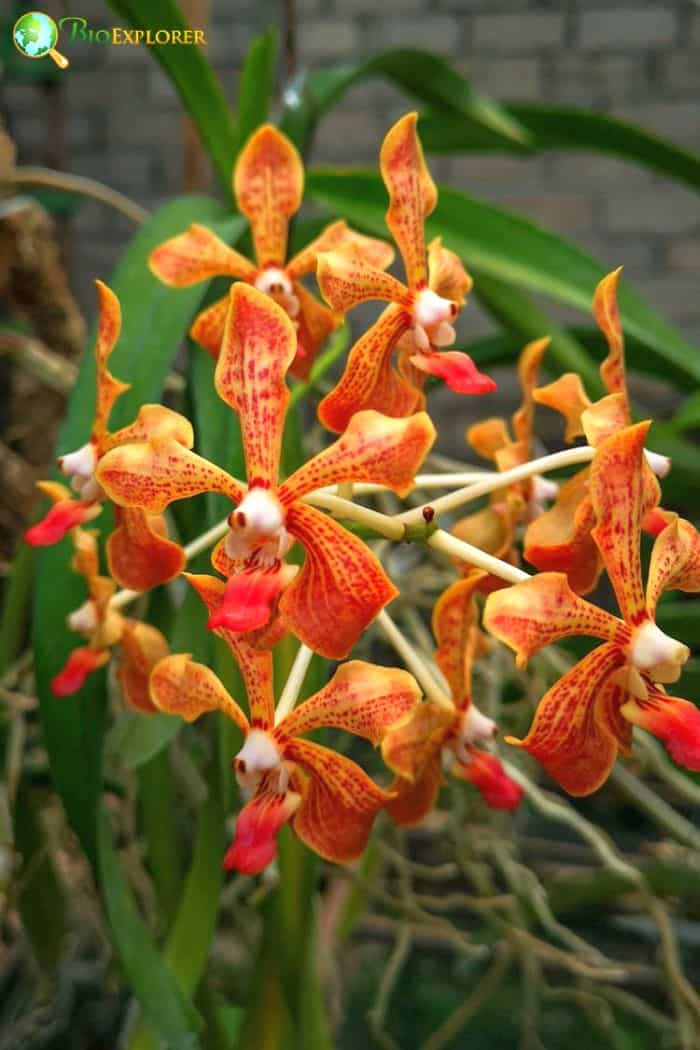
| Plantae | Asparagales | Orchidaceae | Psychopsis | Psychopsis papilio |
Psychopsis papilio, commonly known as the Butterfly Orchid, is an epiphytic orchid species native to tropical regions of South America. This orchid is renowned for its striking flowers that resemble butterflies, featuring bronze and gold coloration with intricate patterns.
- The blooms are characterized by their large, colorful sepals and petals that mimic the appearance of a butterfly in flight. The flowers are primarily yellow with brown or red markings, strikingly contrasting.
- The flowers are produced sequentially on long, slender spikes, with each bloom lasting several weeks.
- Psychopsis papilio thrives in bright but shaded conditions with good air movement, preferring intermediate to warm temperatures[12].
- Its unique and captivating appearance and ability to bloom from the same spike for years make it a popular choice among orchid enthusiasts and collectors.
- These kaleidoscopic orchids are native to tropical regions in Central and South America, including Panama, Trinidad, Colombia, Venezuela, Suriname, French Guiana, and Brazil. Its unique shape and vibrant appearance make it a standout species among orchids.
- Found in tropical forests at elevations of 800 to 1,200 meters. Produces large flowers with long, antennae-like petals and dappled sepals that resemble butterfly wings.
The Butterfly Orchid is well-known for its stunning flowers. It is rumored to have sparked the “Orchidmania” in Europe during the 19th century. This species is popular among orchid enthusiasts for its beauty and unique floral structure.
![]()
11. Crucifix Orchid
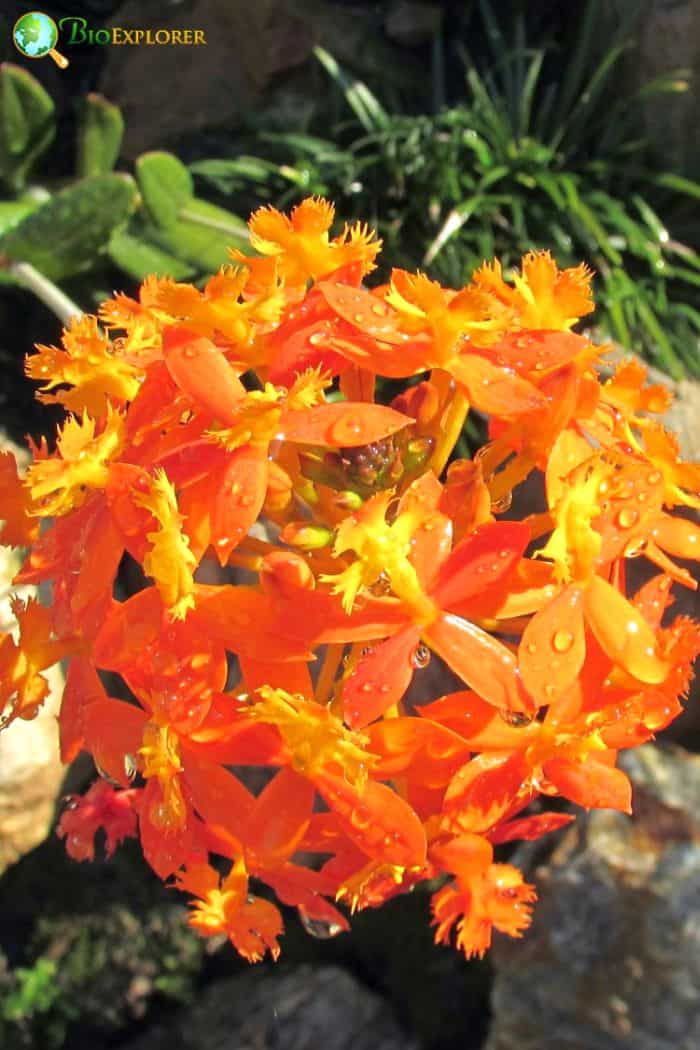
| Plantae | Asparagales | Orchidaceae | Epidendrum | Epidendrum ibaguense |
Epidendrum ibaguense, commonly known as the Crucifix Orchid or Orange Reed Stem Orchid, is a terrestrial orchid species native to tropical regions of South America. This hardy orchid is characterized by its tough, leathery leaves and long, thin stems that produce long-lasting clusters of flowers, typically in shades of orange, pink, or red.
- The blooms are typically bright orange or red, arranged in clusters on tall, upright spikes.
- The common name “Crucifix Orchid” comes from the flower’s lip, the labellum, which resembles a small cross.
- Known for its durability and ease of cultivation, Epidendrum ibaguense thrives in bright, indirect light or part sun conditions and can grow up to 3 feet (1 meter) tall with a spread of 18 inches (45 cm).
- This species is an excellent choice for beginner orchid enthusiasts due to its resilience and ability to bloom readily in various conditions, including Gardens, rock formations, or containers with well-draining soil[13].
- These eye-catching orchids are native to Trinidad, French Guiana, Venezuela, Colombia, and northern Brazil. It thrives in tropical environments, adding vibrant color to the landscape.
- Prefers bright, indirect light and well-draining soil. It requires regular watering but should not be left in standing water.
- The flowers are resupinate, meaning they twist during development so that the lip is on the upper side when fully opened.
![]()
12. Spiny-lipped Bulbophyllum
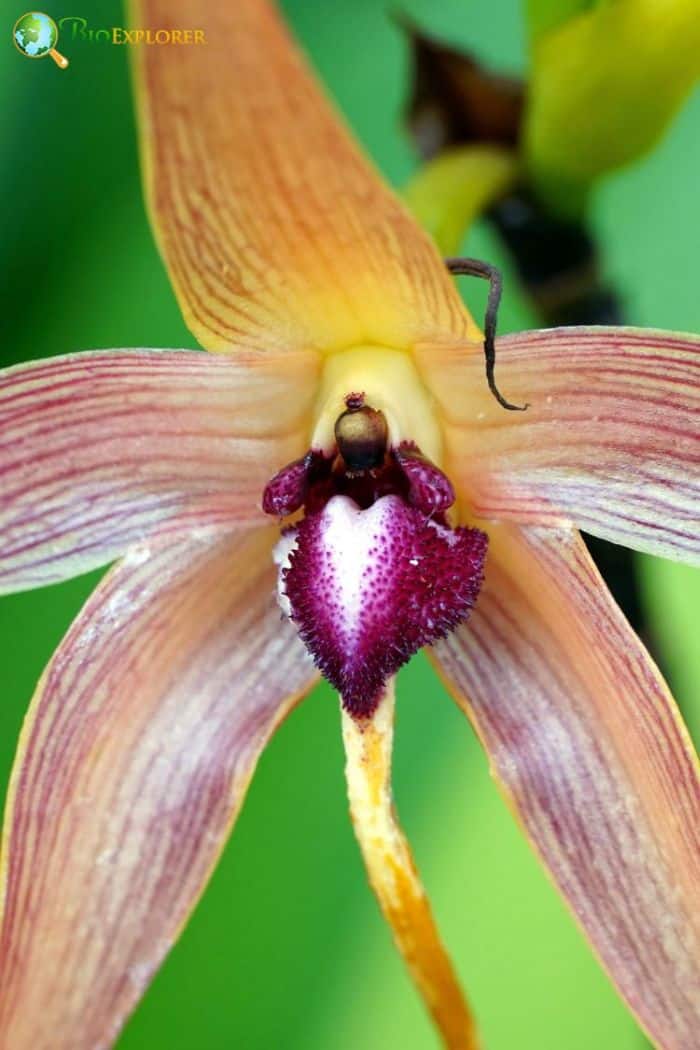
Bulbophyllum echinolabium, commonly known as the Spiny-lipped Bulbophyllum, is a unique and striking orchid species native to Southeast Asia, particularly found in Indonesia and the Philippines.
- This epiphytic orchid is renowned for its large, unusual flowers reaching up to 30 cm long. It features long, twisted sepals and a distinctive spiny lip that gives the species its name.
- The flowers of B. echinolabium are known for their strong, unpleasant odor, which resembles rotting meat and serves to attract fly pollinators.
- As a member of the diverse Bulbophyllum genus, this species thrives in warm, humid conditions with bright, indirect light, making it a challenging but rewarding orchid for experienced growers.
- This luminous orchid species is native to Sulawesi and Borneo’s tropical regions at 600 to 1,200 meters.
- Prefers warm, humid conditions with bright, indirect light. It needs well-draining potting media and frequent watering during the growing season.
![]()
13. Darwin’s Orchid
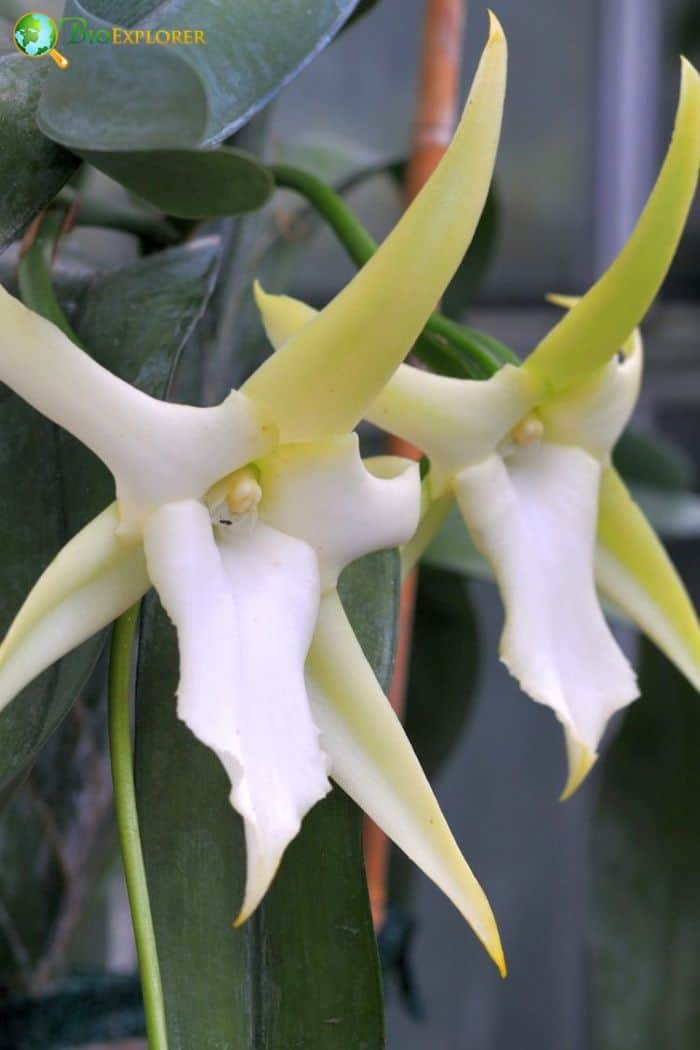
Angraecum sesquipedale, known as Darwin’s Orchid or the Star Of Bethlehem Orchid, is a remarkable epiphytic orchid species native to Madagascar. This orchid is known for its large, star-shaped white flowers and an extraordinarily long nectar spur, and grows up to 12 inches long.
- The species gained notoriety when Charles Darwin predicted that its pollinator would be a moth with an equally long proboscis, a hypothesis later confirmed with the discovery of the hawk moth Xanthopan morganii praedicta[14].
- Angraecum sesquipedale thrives in warm, humid conditions with bright, indirect light, making it a fascinating and challenging plant for orchid enthusiasts.
- Its unique pollination mechanism and striking appearance make it a celebrated example of co-evolution in the plant kingdom.
- This orchid is native to Madagascar and is renowned for its striking flowers and unique pollination mechanism. The name “sesquipedale” means “one-and-a-half feet long“, referring to the long nectar spur of the flower.
- Produces star-like, waxy flowers on 30 cm long inflorescences. Each flower has a long green spur ranging from 27 to 43 cm.
- Prefers warm, humid conditions with bright, indirect light. Flowers typically appear from June to September in the wild and from December to January in cultivation in Europe.
![]()
14. Monk Orchid
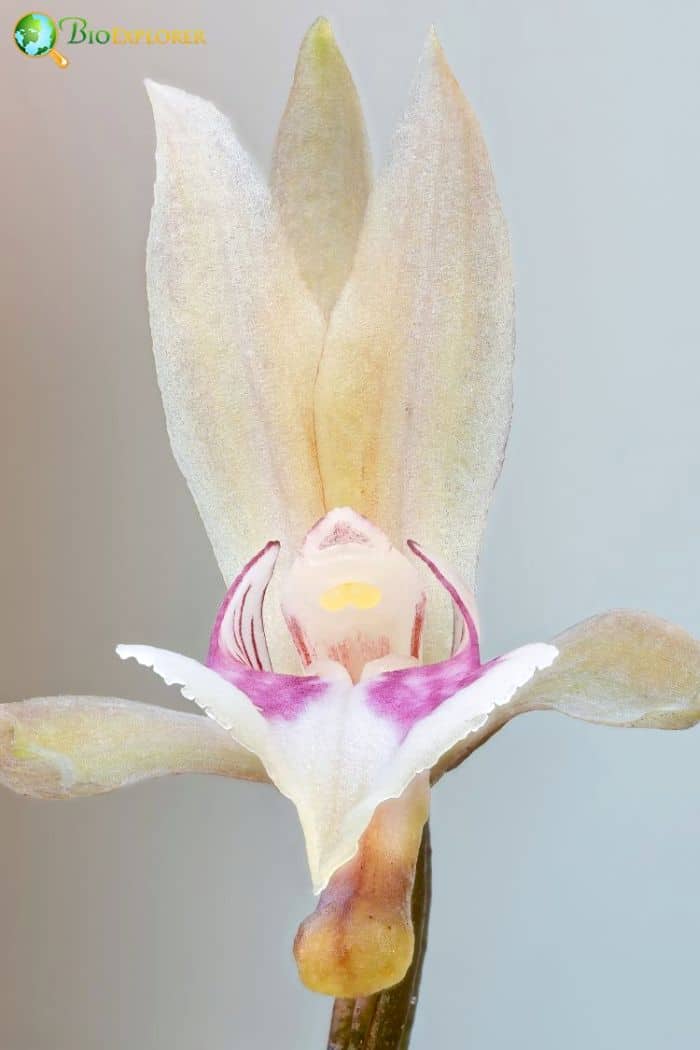
Lycaste skinneri, commonly known as the Monk Orchid, is a stunning orchid species native to the montane forests of Central America, particularly Guatemala. The Monk Orchid gets its name from its flower’s appearance, which resembles a monk’s cowl.
- These orchids are renowned for their large, strikingly beautiful flowers that typically bloom in white, pink, or lavender shades.
- This orchid is celebrated for its large, triangular flowers, which can reach up to 6 inches in width and are typically white to pink with a distinctive lip.
- Blooming primarily in the winter and spring, Lycaste skinneri thrives in cool to intermediate temperatures and requires bright, indirect light[15].
- Known for its long-lasting and fragrant blooms, this species is a favorite among orchid enthusiasts. It is often used in hybridization due to its impressive floral display.
- These vibrant orchids orchids are native to southern Mexico, Guatemala, El Salvador, and Honduras. It’s often found at altitudes around 1,650 meters in humid forest environments.
- Epiphytic, growing on trees, with long leaves emerging from thick pseudobulbs.
- It produces triangular flowers from the base of the pseudobulb, measuring 10 to 15 cm. It blooms from November to April, peaking in January and February.
- Thrives in humid forests at mid-elevations. Sensitive to temperature changes, preferring 18°C at night to 27°C during the day, with humidity levels between 50% and 70%.
- It requires bright, indirect light and a well-draining medium. Sensitive to temperature and humidity changes.
Lycaste skinneri is Guatemala’s national flower, also known as the monja blanca or “white nun”. This status was granted due to its beauty and cultural significance.
![]()
15. Low’s Cymbidium
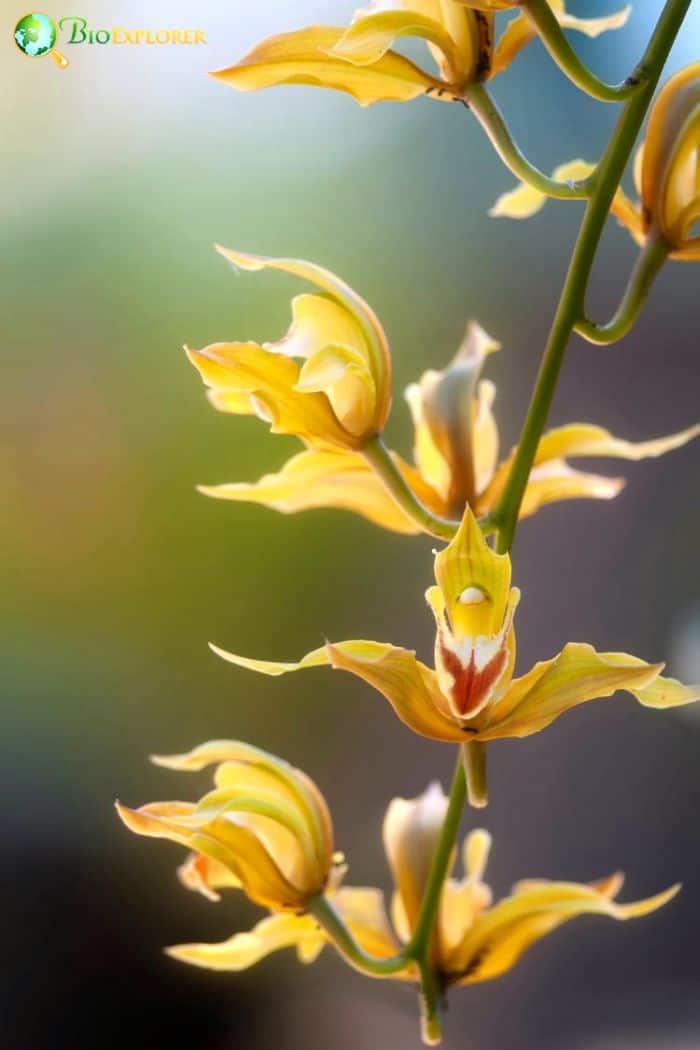
Low’s Cymbidium is named after its discoverer, Hugh Low. This orchid is native to Southeast Asia, including Assam in India, Yunnan in China, Myanmar, Thailand, and Vietnam. It is well-known for its striking appearance and has received the Royal Horticultural Society’s Award of Garden Merit[16].
- Flower Colors: Typically, greenish-yellow with a white lip and maroon or reddish-brown blotch.
- Growth: Terrestrial or epiphytic, growing on trees or rocky surfaces in its native habitat.
- Leaves: Long, narrow, and arching, with pseudobulbs that store water and nutrients.
- Inflorescence: Produces long spikes with numerous flowers, often blooming in late winter to early spring.
- Habitat: Found in the forested regions of Southeast Asia at elevations ranging from 1,200 to 1,800 meters.
- Cultivation: Prefers cool to intermediate temperatures and bright, indirect light. Needs well-draining soil and regular watering, particularly during the growing season.
Low’s Cymbidium is appreciated for its beauty and resilience, making it a popular choice among orchid enthusiasts.
![]()
16. Digby’s Rhyncholaelia
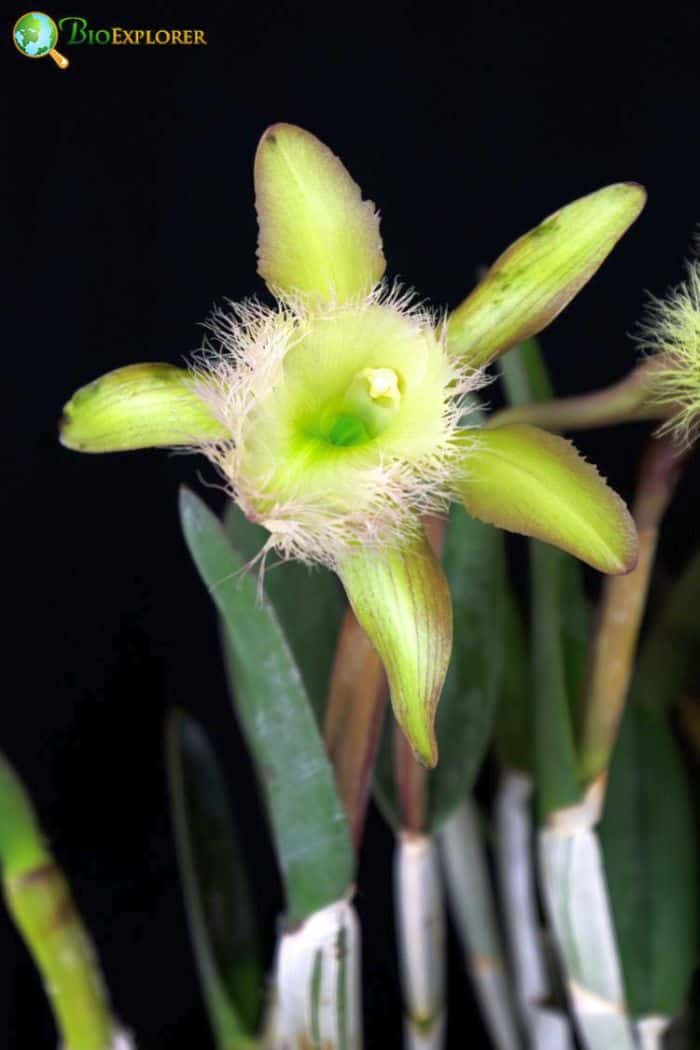
Digby’s Rhyncholaelia is named after Sir Kenelm Digby, a notable English natural philosopher and botanist. This orchid is native to Central America, specifically Honduras, Belize, Guatemala, and Mexico. It is famous for its large, frilled lip and striking appearance.
- Flower Colors: Usually light green to yellowish-green with a frilled white or greenish lip.
- Growth: Epiphytic, growing on trees in its natural habitat.
- Leaves: Thick, leathery leaves that are long and narrow.
- Inflorescence: Produces single, large flowers with a distinct frilled lip, known for its pleasant fragrance.
- Habitat: Found in tropical forests from sea level to elevations up to 1,500 meters.
- Pollination: Attracts pollinators like moths, especially those with long proboscises, which can reach the nectar deep within the flower.
- Cultivation: Prefers bright, indirect light and intermediate to warm temperatures. It requires a well-draining potting medium and consistent moisture during the growing season.
Rhyncholaelia digbyana is admired for its beauty and holds cultural significance[17], being the national flower of Honduras.
![]()
17. Nun’s Orchid
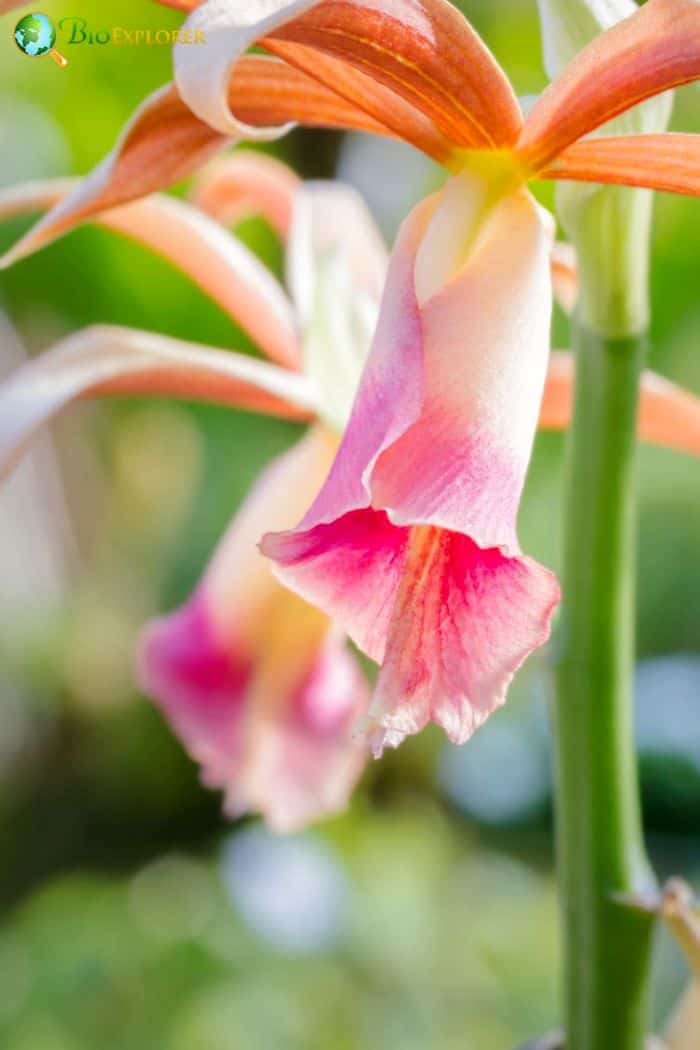
| Plantae | Asparagales | Orchidaceae | Phaius | Phaius tankervilleae |
Phaius tankervilleae, commonly known as the Nun’s Orchid or Greater Swamp-Orchid, is a striking terrestrial orchid species native to tropical and subtropical Asia, extending to the South Pacific and northeastern Australia.
- The flowers are large, with petals and sepals ranging from white to pink, and a distinctive lip often marked with contrasting colors.
- These rightly-hued orchids are characterized by their pleated, palm-like leaves and impressive flower spikes that can reach up to 2 meters tall, bearing 10-35 spectacular flowers.
- The blooms, which appear from late winter to early spring, feature rusty brown or reddish-brown petals and sepals with a contrasting pink or purple lip, resembling a nun’s hood.
- First introduced to England from China in 1778, P. tankervilleae is the first tropical orchid to successfully flower in England about 250 years ago.
- Highly adaptable and relatively easy to maintain, this orchid has become popular in cultivation and has naturalized in various tropical regions worldwide, including parts of the Americas[18].
- The Nun’s Orchid is named after Lady Tankerville, an English noblewoman who was an avid botanist.
- Prefers semi-shade and moist conditions. Easily propagated from seeds or by dividing the base clump of the plant.
![]()
18. Veiled Orchid
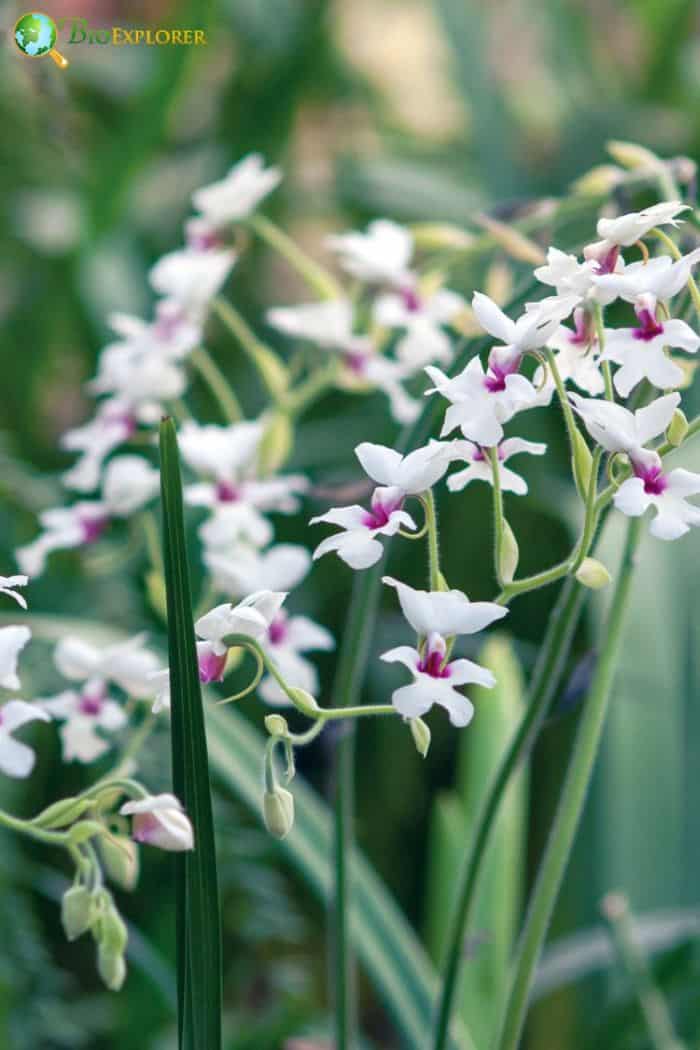
Calanthe vestita, commonly known as the Veiled Orchid, is a terrestrial orchid species native to Southeast Asia, including Thailand, Malaysia, and Indonesia. This deciduous orchid is characterized by its large, pleated leaves and impressive flower spikes reaching up to 60 cm tall, bearing numerous showy flowers.
- The blooms, which typically appear in winter, feature white or pale pink sepals and petals, with a distinctive lip that may be yellow, orange, or red at the base.
- Calanthe vestita is prized for its ease of cultivation and adaptability to various growing conditions, making it popular among orchid enthusiasts.
- As a member of the Calanthe genus, it shares the common name “Christmas orchid” with its relatives, reflecting its winter blooming habit[19].
- The Veiled Orchid gets its name from the delicate, almost translucent appearance of its flowers that resemble a veil.
- This radiant orchid is native to a wide region stretching from Assam in India to New Guinea, including countries like Thailand, Indonesia, Malaysia, and the Philippines. It is well-known for its attractive blooms and ease of growth in cultivation.
- Prefers semi-shade and moist conditions. Propagates easily from seeds or by dividing clumps.
![]()
19. Fire Orchid
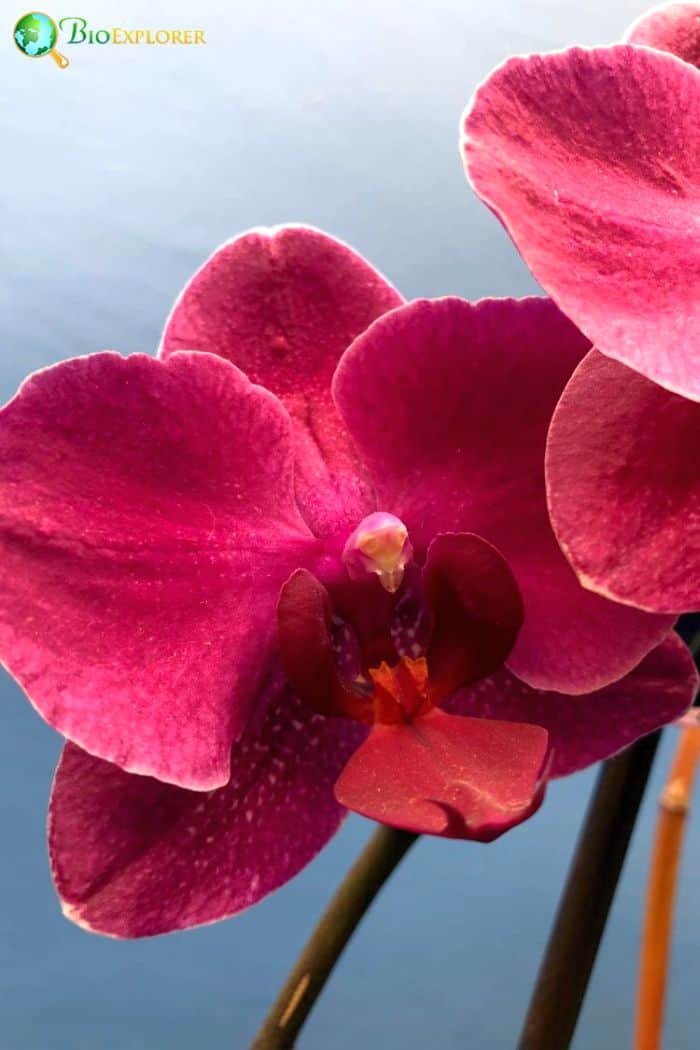
Renanthera storiei, commonly known as the Fire Orchid, is a striking orchid species endemic to the Philippines. This medium to giant-sized, monopodial orchid grows as a terrestro-epiphyte at elevations up to 1,000 meters.
- The flowers are typically bright red or orange-red, contributing to its common name.
- The Fire Orchid is renowned for its spectacular floral display. It produces inflorescences that can bear up to a hundred flowers, each measuring approximately 6 cm wide.
- These blooms typically appear in summer, showcasing vibrant red or orange colors that justify their fiery moniker[20].
- Renanthera storiei thrives in hot to warm growing conditions, preferring bright light and high humidity. Cultivation requires frequent watering (2-3 times per week) when potted, allowing the media to dry slightly between waterings.
- As a member of the Renanthera genus, R. storiei is valued for its showy flowers and unique growth habit. Its endemic status in the Philippines makes it an important species for conservation efforts and a prized addition to orchid collections worldwide.
![]()
20. Orange Butterfly Orchid
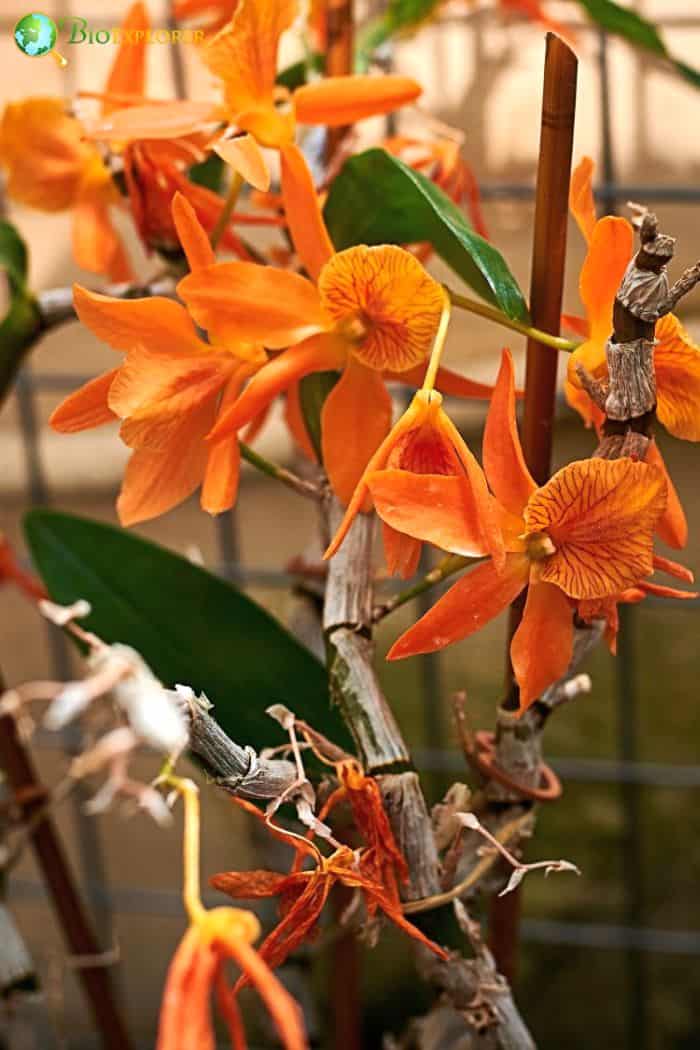
Prosthechea vitellina, also known as the Orange Butterfly Orchid, is a beautiful orchid species native to Mexico, Honduras, and Guatemala. It grows naturally as an epiphyte (a plant that grows on other plants) at high elevations, typically between 1,400 and 2,600 meters above sea level.
- The flowers of Prosthechea vitellina are striking and vibrant. They have a bright orange-yellow color that resembles the yolk of an egg, which is why “vitellina” is part of its name.
- The flowers grow in clusters on a stem that emerges from the top of the pseudobulb (a thickened part of the stem).
- Each flower is about 2 inches (5 cm) wide and has a unique shape that looks like a butterfly with spread wings[21].
- These colorful orchids prefer cool to intermediate growing conditions, which matches its natural high-elevation habitat. It enjoys bright light but should be protected from direct, harsh sunlight. Prosthechea vitellina can be grown in pots using sphagnum moss as a growing medium.
- One interesting fact about this orchid is that it’s part of a genus previously classified under Encyclia. The Prosthechea genus is known for having flowers with a lip attached to the column. This unique characteristic helps distinguish it from other orchid genera.
![]()
21. Fairy Slipper Orchid
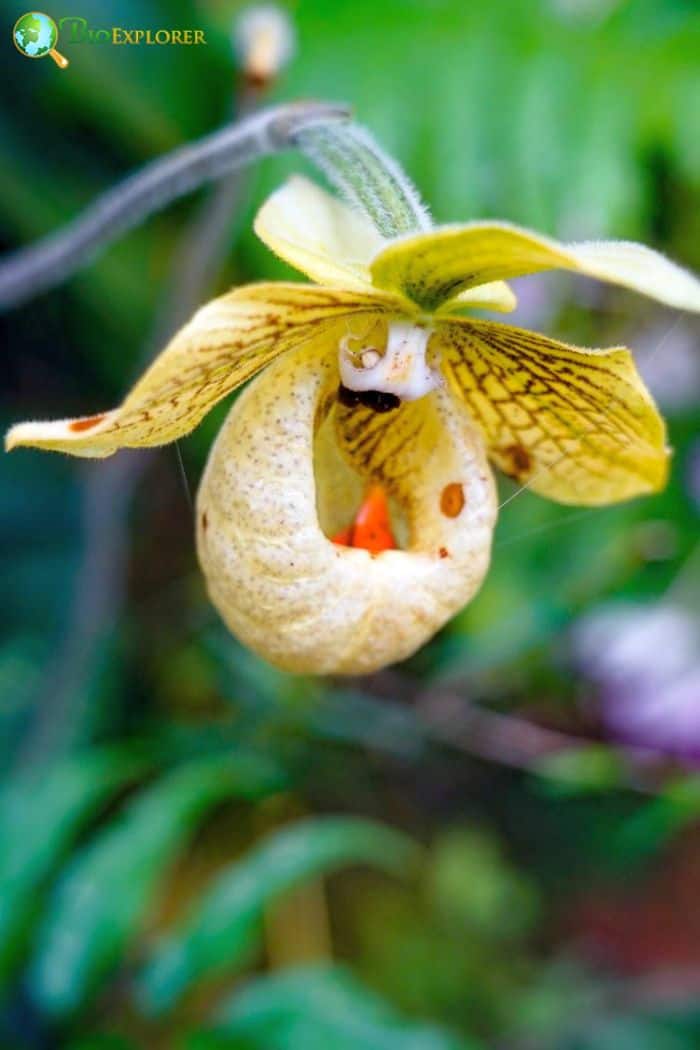
Paphiopedilum micranthum, commonly known as the Fairy Slipper Orchid or Silver Slipper Orchid, is a charming and distinctive species of slipper orchid native to Vietnam and parts of China.
- Appearance: It features a large, rounded pouch-like lip that resembles a bubble, giving it a unique and adorable appearance. The flower is typically pink or light purple with darker veining.
- Size: Despite its name, “micranthum” meaning small-flowered, the bloom is quite large compared to the plant’s overall size.
- Habitat: This orchid is native to northern Vietnam and southern China, where it grows in crevices and on cliffs at elevations of 460 to 1,600 meters.
- Growing conditions: A terrestrial orchid prefers to remain moist but not soggy at the roots. It generally requires low to intermediate light conditions.
- Cultivation: This species is popular among orchid enthusiasts for its cute, bubbly appearance. It’s often compared to other slipper orchids but has a distinctively round, bulbous lip that sets it apart.
- Blooming: The flowers typically appear in late winter to spring in cultivation.
- Care: Like other Paphiopedilums, P. micranthum requires careful attention to watering and humidity. It’s generally considered more challenging to grow than some other slipper orchids.
- Variations: There is a rare yellow form of this species, adding to its appeal among collectors.
- Unlike some of its relatives, Paphiopedilum micranthum flowers have no fragrance.
![]()
22. Spectacular Dendrobium
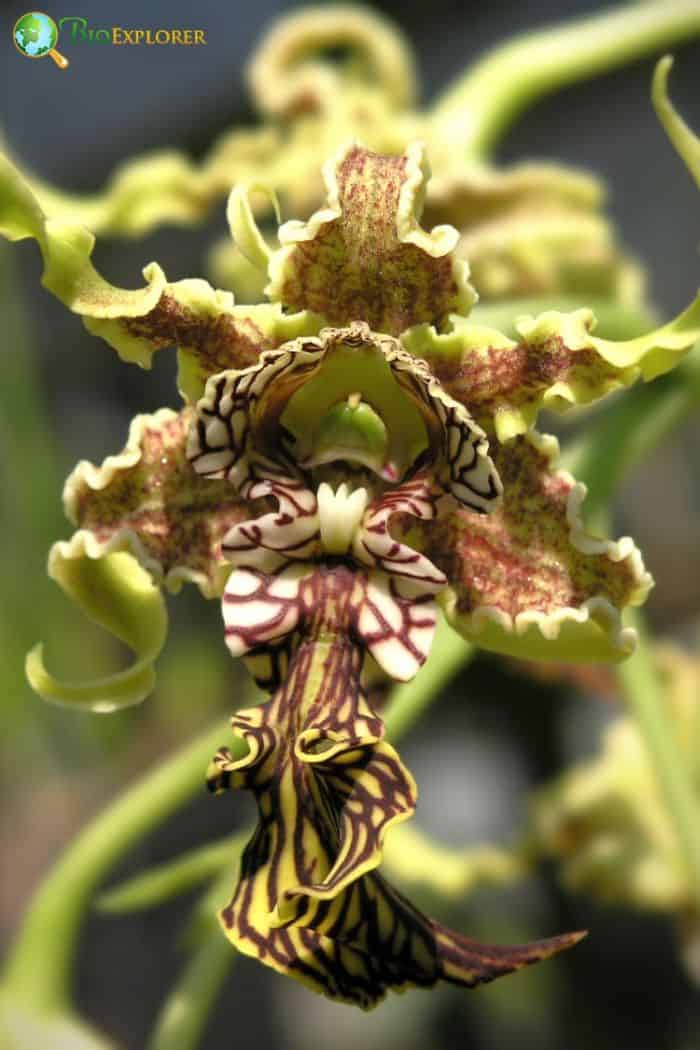
Dendrobium spectabile, also known as the Spectacular Dendrobium, is an orchid species native to New Guinea and nearby islands. It was discovered and recorded in 1849. These vivid orchids grow on other plants in the wild and is known for its large size and unusual flowers[22].
- The flowers of Dendrobium spectabile are big and eye-catching, measuring up to 5 inches (12.5 cm) across.
- They have a unique twisted shape with long, narrow petals and sepals. The colors can be a mix of yellow, green, white, and purple, often with interesting patterns.
- These flowers grow from thick stems called pseudobulbs, which can be up to 16 inches (40 cm) tall.
- This beautiful orchid likes warm to hot temperatures between 65-90°F (18-32°C) and high humidity. It needs bright light but should be protected from strong midday sun.
- The plant requires regular watering when growing but less water in winter. It grows best in small pots or on bark with soil that drains well.
- Dendrobium spectabile usually blooms in late spring to summer, and the flowers can last 4-6 weeks.
- Interestingly, the flowers have a special part that moves when air blows on them, which helps attract insects for pollination in the wild. This orchid can be tricky to grow and is better suited for people with experience in growing orchids.
![]()
23. Heart-shaped Encyclia
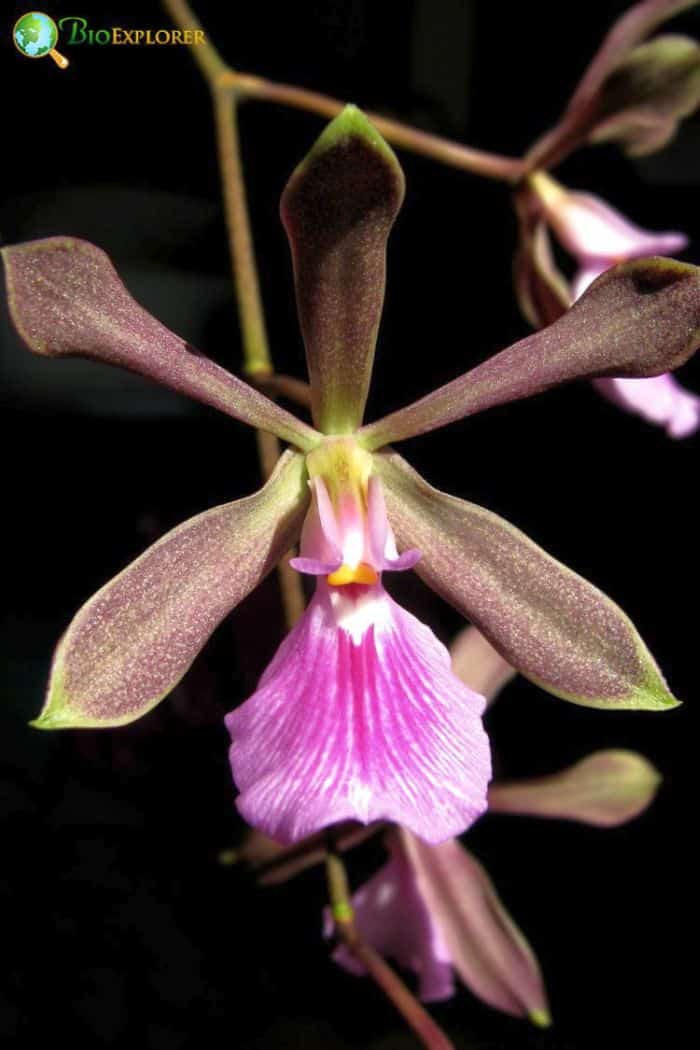
Encyclia cordigera, also known as the Heart-shaped Encyclia, is a beautiful orchid native to Mexico, Central America, and South America. This orchid is known for its striking flowers and pleasant fragrance.
- The flowers of Encyclia cordigera are quite large, measuring about 2 to 3 inches across. They have a unique heart-shaped lip, where the name “cordigera” comes from, meaning “wearing a heart” in Latin[23].
- The petals and sepals are usually a rich mahogany color, while the lip can be a bright pink or white, creating a stunning contrast.
- The flowers are also fragrant, with a scent that can be described as a mix of rose, tropical sweetness, and a hint of vanilla.
- These colorful orchids prefer bright light but should be protected from direct, harsh sunlight. It thrives in warm temperatures, with nighttime lows above 60°F and daytime highs below 95°F.
- Encyclia cordigera needs a well-draining growing medium, such as a mix of chunky bark, perlite, and pumice.
- It needs regular watering as it grows but should dry out between waterings. Winter requires a long, dry rest period with minimal watering.
- Encyclia cordigera blooms in the spring, and its flowers can last several weeks. This orchid is relatively easy to care for and can be a rewarding addition to any orchid collection.
![]()
24. Tiger Orchid
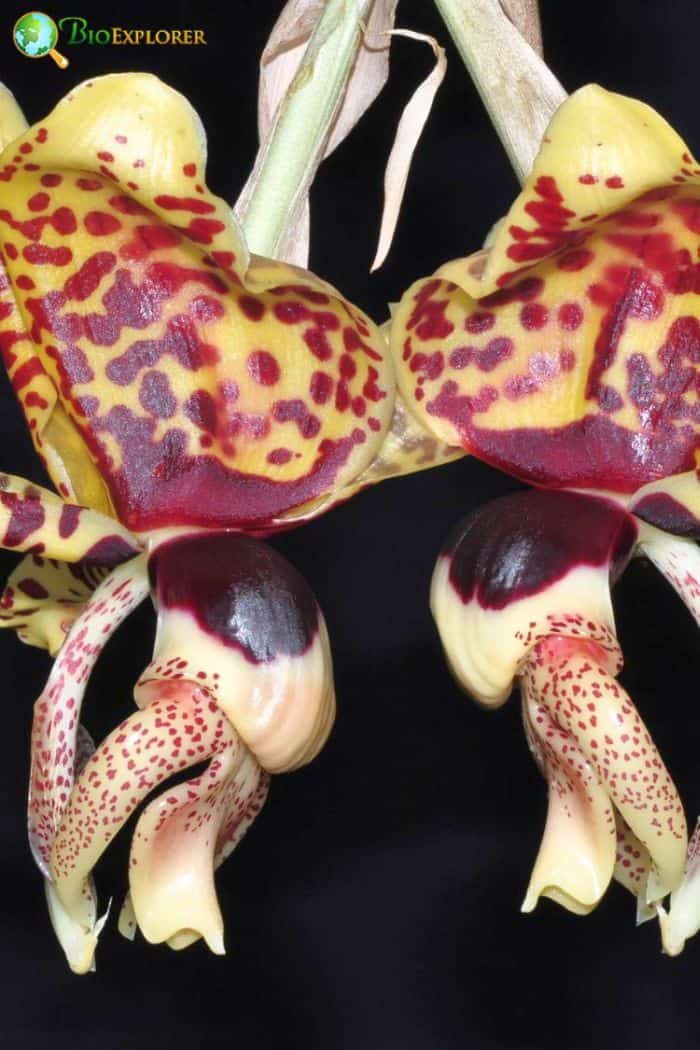
Stanhopea tigrina, commonly known as the Tiger Orchid, is a striking orchid species native to Mexico. It grows naturally in damp, thick forests between 1,970 and 5,580 feet (600-1700 meters).
- The Tiger Orchid produces large, showy flowers that hang downwards. Each flower can measure up to 8 inches (20 cm) across. The blooms have a unique white and red mottling pattern, resembling a tiger’s coat. They grow on a pendant inflorescence (flower stem) that can be 6 inches (15.3 cm) long and hold 3-10 flowers[24].
- One of the most interesting features of Stanhopea tigrina is its strong fragrance, which is described as a mix of chocolate and vanilla.
- This scent, along with the flower’s shape, attracts bee pollinators. The bees actually fall through the flower, collecting pollen as they go.
- The Tiger Orchid typically blooms from May to October, with peak flowering in July. Its flowers are short-lived, usually lasting only 3-5 days.
- For cultivation, Stanhopea tigrina prefers bright but indirect light and intermediate temperatures. It’s best grown in hanging baskets to allow the downward-growing flowers to emerge freely.
![]()
25. Golden Throated Orchid
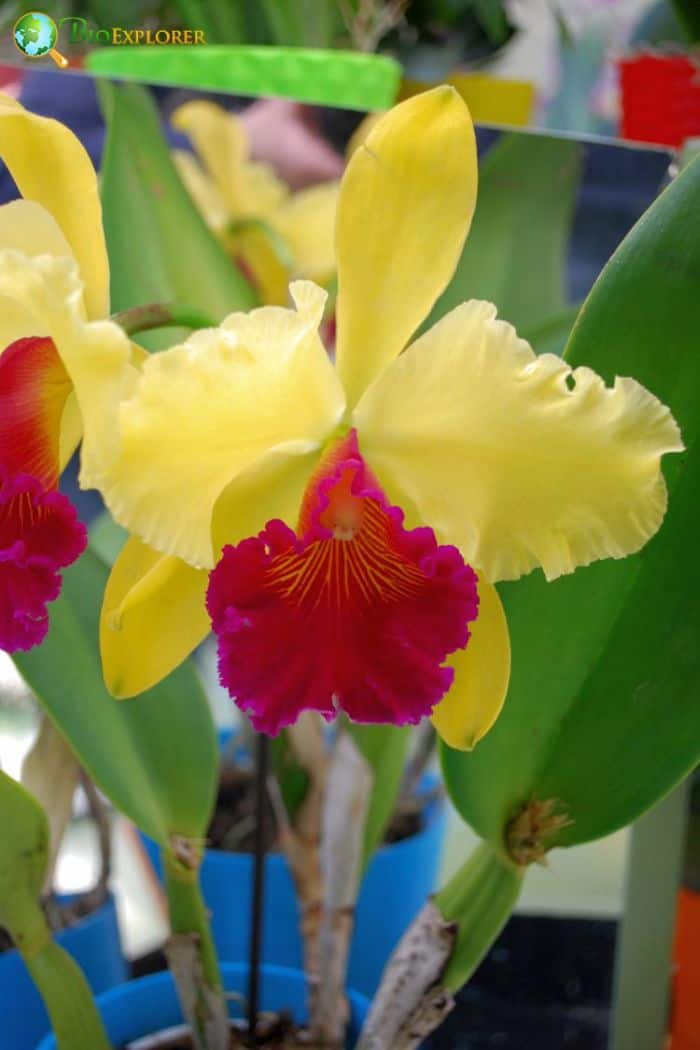
Cattleya dowiana, also known as the Golden Throated Orchid, is a beautiful orchid species native to Costa Rica and Colombia. It grows naturally in rainforests at elevations between 1,000 to 1,500 meters.
- The flowers of Cattleya dowiana are large and showy, measuring about 5 to 7 inches across. They have a unique color combination that makes them stand out.
- The sepals and petals are usually a rich golden-yellow color. The lip, the most striking part of the flower, is a velvety crimson-purple with golden veins radiating from the center. Each stem can produce 2 to 7 flowers.
- These colorful orchids typically bloom in late summer to early fall. The flowers have a sweet fragrance that is strongest in the morning. They last about 2 weeks only.
- Cattleya dowiana prefers warm temperatures, with a minimum of 65°F at night. It requires bright light but should be shielded from direct sunlight.
- During its growing season, it requires regular watering. Still, it should be kept drier during its rest period from September to March.
- One interesting fact about Cattleya dowiana is that it’s highly valued in orchid breeding. It has been used to create hybrid orchids because it can darken and enrich the colors of other Cattleyas when crossed with them[25].
![]()
The Orchidaceae Family: A Brief Overview
Orchids have evolved to inhabit almost every ecosystem on the planet except arctic tundras. This remarkable adaptability has led to incredible diversity within the family. Some key characteristics of orchids include:
- Bilateral symmetry: Most orchid flowers can be divided into two mirror-image halves.
- Modified petal: Known as the labellum or lip, this specialized petal often serves as a landing platform for pollinators.
- Column: A unique structure that combines male and female reproductive parts.
- Tiny seeds: Orchid seeds are among the tiniest Plants, typically carried by the wind[2].
Orchid Habitats and Adaptations
Orchids have developed numerous adaptations to thrive in their varied habitats:
- Epiphytic growth: Many orchids grow on other plants, particularly Trees, without parasitizing them. This adaptation allows them to reach sunlight in dense forests[3]).
- Pseudobulbs: These swollen stems store water and nutrients, helping orchids survive dry periods.
- Aerial roots: These specialized roots absorb moisture and nutrients from the air, a crucial adaptation for epiphytic species.
- CAM Photosynthesis: Some orchids use this water-efficient form of photosynthesis to survive in arid environments.
The Importance of Color in Orchid Ecology
The vibrant colors of orchids are far more than just aesthetic marvels; they play crucial roles in the plants’ survival and reproduction:
- Pollinator attraction: Different colors attract specific pollinators. For example, the bright red of Sophronitis coccinea is particularly attractive to Hummingbirds.
- Mimicry: Some orchids, like the Ophrys species, mimic the appearance of female Insects to attract male pollinators.
- UV patterns: Many orchids have patterns visible only in UV light, which guide pollinators to nectar rewards.
- Warning coloration: Bright colors can also warn herbivores of unpalatable compounds in the plant.
A fascinating example of color’s importance is seen in the blue orchid phenomenon. True blue is rare, and the Vanda coerulea is one of the few orchids to achieve this color.
Understanding these fundamental aspects of orchid biology and ecology enhances our appreciation of their colorful diversity. As we explore the top 25 colorful orchids, remember the complex evolutionary processes and ecological relationships shaping each species’ unique palette.
These vibrant orchids, with their varied hues and forms, play crucial roles in their ecosystems. However, many face threats from habitat loss and over-collection. As we marvel at their beauty, we must also recognize our responsibility to preserve these natural wonders.
By supporting conservation efforts and cultivating responsibly, we can help ensure that future generations will continue to be inspired by the remarkable diversity of orchids.



